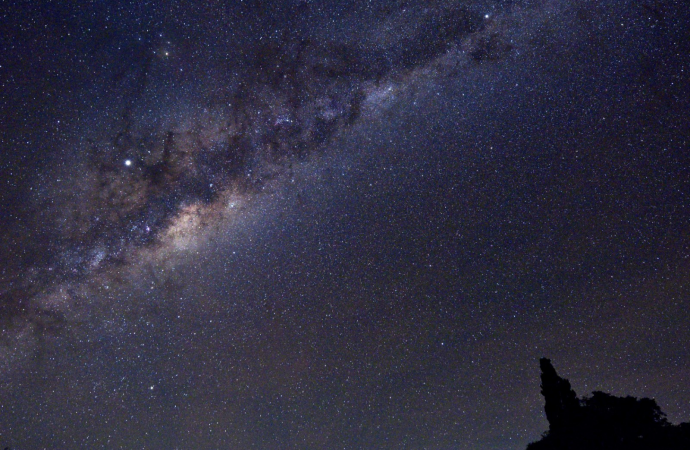Astronomers have discovered that gas and dust from different sources in our galaxy, and heavy elements within them, are less evenly distributed than previously believed. Because these are the raw materials for star formation, the finding could force scientists to redefine their understanding of how the Milky Way and other galaxies evolved.
Source: Nesweek
Because gas, dust, and elements heavier than helium—which astronomers call “metals” even though they are often just atoms in a gas—are such a key part of any galaxy, understanding their composition and distribution is vital in building a picture of how galaxies form and change over time.
With the aid of the Hubble Space Telescope and the Very Large Telescope, located in the Atacama Desert region of Northern Chile, astronomers from the University of Geneva (UNIGE) used a new technique to calculate the total composition of gas and dust in the atmosphere of stars throughout the Milky Way.READ MORE
This allowed them to trace the total quantity of metals in the dust and compare it to previously obtained totals. What they discovered is stars in some areas had as little as 10 percent of the heavy elements our star, the Sun, has. The team’s research was published on Wednesday in the journal Nature.
“This discovery plays a key role in the design of theoretical models on the formation and evolution of galaxies,” Jens-Kristian Krogager, a researcher at the UNIGE’s Department of Astronomy, said in a press release. “From now on, we will have to refine the simulations by increasing the resolution, so that we can include these changes in metallicity at different locations in the Milky Way.”
When stars reach the end of their lifetimes, they explode in violent and powerful supernovas. This spreads heavy elements through galaxies, which clumps in cold regions. As hydrogen and helium in these cool dense regions eventually condense to create stars, these elements are added to the mix.
The team was led by Annalisa De Cia of the UNIGE Faculty of Science. She said in a press release: “Initially, when the Milky Way was formed, more than 10 billion years ago, it had no metals. Then the stars gradually enriched the environment with the metals they produced.”
Astronomers had always assumed that this material was evenly spread across the Milky Way’s vast 105,700 light-year diameter from its central bulge of stars to its spiral arms, where Earth and its solar system are located.
The amount of metals found in the Sun’s atmosphere, known as the solar metallicity, was believed to be common to stars, gas clouds and other bodies, across the Milky Way. This solar metallicity could, therefore, be used as a measure of chemical abundance in our galaxy.
This new research suggests that may not be the case after all. Stars and planets could be formed from gases with radically different or unique compositions.

Source: Nesweek

































Leave a Comment
You must be logged in to post a comment.